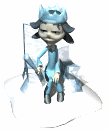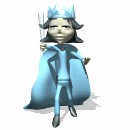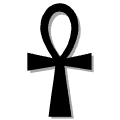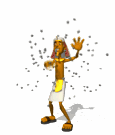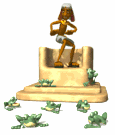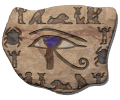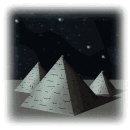|
Numeracy
problems to solve for Key Stage 1, 2 and 3
Key
Stage 1 Solve it...!
Spring Flowers |
This is a game for 2 players.
You will need:
- Spring Flowers playing
board
- 18 Flower Fraction cards
(Coloured Pink, yellow and blue) Sort into two piles of 10 halves
of flowers and 8 quarters. of flowers.
You will need to print these
off, either in colour, or you can colour them in yourself. The flower
fraction cards need cutting the lines shown.
Click
here for the Spring Flowers playing board.
Click
here for the Flower Fraction Cards
How to play
- Shuffle each of the piles
of cards. Put the quarter flower cards face down on the left on the
playing board and the half flower cards on the right on the board.
- Decide who starts and
who has which flower bed.
- Player 1 chooses either
a half or quarter flower fraction card and places it face up on the
centre space in the board. Player 1 then places the card on the matching
colour and fraction shape on their own flower bed. Player 2 does the
same.
- Players carry on taking
it in turns to turn over a flower fraction card. If a card is already
on the matching flower position (some colour and fraction), the player
misses a turn and the other player can use that card.
- The first player to complete
their own flower bed is the winner.
- Have fun!
An Extra Challenge
You will need to print and
cut out the 1/2 and the 1/4 cards. Shuffle the 1/2 and1/4 cards and
place the pile face down hear the playing board. Each player in turn
picks a card from the pile to determine whether to pick up a half or
quarter flower card.
Key
Stage 2 Solve it...!
Frosty Fractions |
This is a game for 2 players.
You will need
- Frosty Fractions Playing
Board
- The two types of snowflakes
tokens sorted into two separate piles.
- A set of all the fractions
cards placed down in a pile
- You will need to print
them all off.
Click
here for the Frosty Fractions playing board.
Click
here for the Frosty Fraction Cards
How to play
- Decide who starts by picking
a fraction card (higher fraction starts)
- Player 1 takes two fraction
cards (from the face down pile) and place them on the spaces provided
on the playing board. The two fractions are added. You might need
to make use of equivalent fraction or change improper fractions into
mixed numbers. If the answer is available on playing board, the player
places one of their snowflake tokens on the answer.
- Player 2 does the same.
If a snowflake token is already on a fraction or the number isn't
there, that player misses a turn.
- Players carry on taking
turns to turn over two fraction cards. When all the fraction cards
are used up, shuffle them and turn them over to use again.
- The game continues until
one player has made a line of three of their own snowflake tokens.
- Have fun!
An extra challenge
Key
Stage 3 Solve it...!
Egyptian Fractions |
The Ancient Egyptians started
writing numbers about 5000 years ago. Their numbers were based on decimal
system; that is, they counted in tens, hundreds and thousands as we
do today.
Papyrus
The Egyptians recorded their numbers by carving them onto stone or papyrus
'paper'.
Papyrus was made from thin layers of dried papyrus
reeds that could be found growing along the banks of the Nile.
Egyptian Numbers
Here are the Ancient Egyptians
symbols, called hieroglyphs, for numbers up to a million.
Number |
Hieroglyph |
Description |
1 |
|
a
stick |
10 |
|
a
basket handle |
100 |
|
a
spiral of rope |
1000 |
|
a
lotus flower |
10
000 |
|
a
bent finger |
100
000 |
|
a
tadpole |
1
000 000 |
|
a
kneeling man |
The Egyptians wrote their
hieroglyphs left to right, right to left or up and down.
Below are some numbers written
as hieroglyphs. Use the table above to work out what these numbers are.
Read from right
Read from left
Task B
Writing Egyptian
fractions
All fractions written by
the Egyptians, apart from 2/3, and 3/4 were unit fractions;
that is, they had 1 as the numerator. Fractions in ancient Egypt were
shown by putting a hieroglyph of a mouth above a number.
|
|
|
|
| |
|
|
|
|
|
What
unit fractions are these? |
1/5 |
1/8 |
|
|
If the denominator was a
big number then the mouth hieroglyph would be put at the front of the
number.
|


